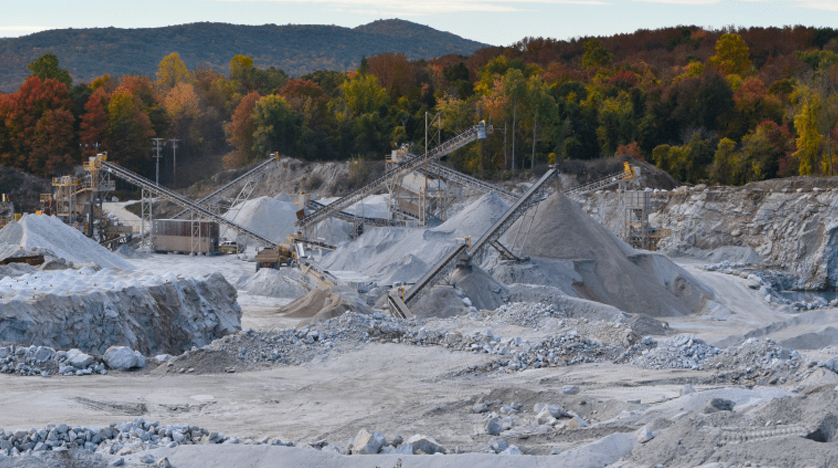
Posted June 5, 2017
Category(s) Industry News

As a family owned and operated business, Braen Stone believes in keeping customers informed with valuable information. This blog post by the National Stone, Sand & Gravel Association explains the benefits of quarry jobs and the overall effect they have on the economy.
The following post is an article by the National Stone, Sand & Gravel Association. The writer that wrote the article below is not affiliated with Braen Stone in any way.
EACH JOB IN A QUARRY supports nearly five jobs, 4.87 to be exact, in other industries and sectors, and this multiplier effect is found at the local and state levels.
This is just one of many facts found by the Washington D.C.-based Phoenix Center, which released an economic analysis of exactly how a stone, sand or gravel operation impacts jobs, tax revenues, other businesses and other key economic indicators in a community.
The Economic Impact of the Natural Aggregates Industry: A National, State, and County Analysis was conducted by George Ford, Ph. D., chief economist at The Phoenix Center and quantifies the current impact of the aggregates industry on the broader economy and sheds light on how an expansion of the industry, perhaps through new infrastructure spending, might ripple through the economy. “If you create opportunity in a county next door, that income comes back. It creates a feedback loop.
This study helps to see how a specific operation can affect any nearby community,” said Ford. A lot of the economic benefits can be attributed to the salaries from the aggregates industry, which are higher than the national average wages. According to the analysis, not only does the aggregates industry generate $27 billion in annual sales and employ 100,000 workers at above-average wages, the economic activity in the sector has large effects on other industries.
The industry also supports $122 billion in national sales, $32 billion in national earnings (i.e., wages) and between 364,000 and 600,000 jobs across a wide range of occupations and industries. “We know that a quarry cannot start or grow without local permits and approval.
Unfortunately, it’s often the case that local zoning committees or state departments and even neighbors oppose quarries seeking permits,” said Michael W. Johnson, NSSGA president and CEO. “This is a welcome study for our industry. One that helps to clearly demonstrate the value of aggregates operations have for towns and cities, states and the nation’s economy.”
In many cases, the benefits of a quarry are similar at the state level. Because aggregates are consumed by housing and construction projects within 50 miles of the quarry that produced them, these products literally shape their communities. In Connecticut, the state’s 486 quarry jobs translate into 2,267 statewide jobs. Texas, the state with the largest quarry work force, has 11,506 statewide jobs resulting from its 4,257 quarry jobs.
Ford said that the Phoenix Center study stands in contrast to a housing estimate study from the University of Auburn. The economist who authored the study measured house values up to five miles away from a quarry and inferred that quarries negatively affect those values.
“It’s utter garbage,” Ford said. “When you are looking for land for a quarry, do you look at Beverly Hills? No. You look for inexpensive land where there aren’t many people. When you find that, you find inexpensive homes… but you’re purposefully not locating where housing prices are high!”
Ford pointed out the long-term impacts of a quarry on communities. “Many times, people use these surveys to show an immediate benefit. But some quarries are family-owned and operated for generations at a time,” Ford said. “In Birmingham, a quarry started operating in 1884 and has plenty of rock left.
So, this study really shows the long-term benefits that quarries provide as far as jobs, income and business for a county and neighboring areas.” Also, the survey highlights that the benefits of a quarry do not end when a company finishes quarrying operations. “As a scuba diver, I know most people learn to dive in a rock quarry if you’re not near an ocean.
You have a Six Flags in a former rock quarry. Golf courses are in former quarries, heck the U.S. Open was recently played at one,” Ford said. “These are permanent benefits.” Read the full report at http://www.phoenix-center.org/scorecards/AggregatesIndustry2017 ScorecardFinal.pdf
VIBRATION CONCERNS SUPPORT NUMBER
973-720-7094
Thank you! Your form was submitted successfully.
There has been an error submitting your form.